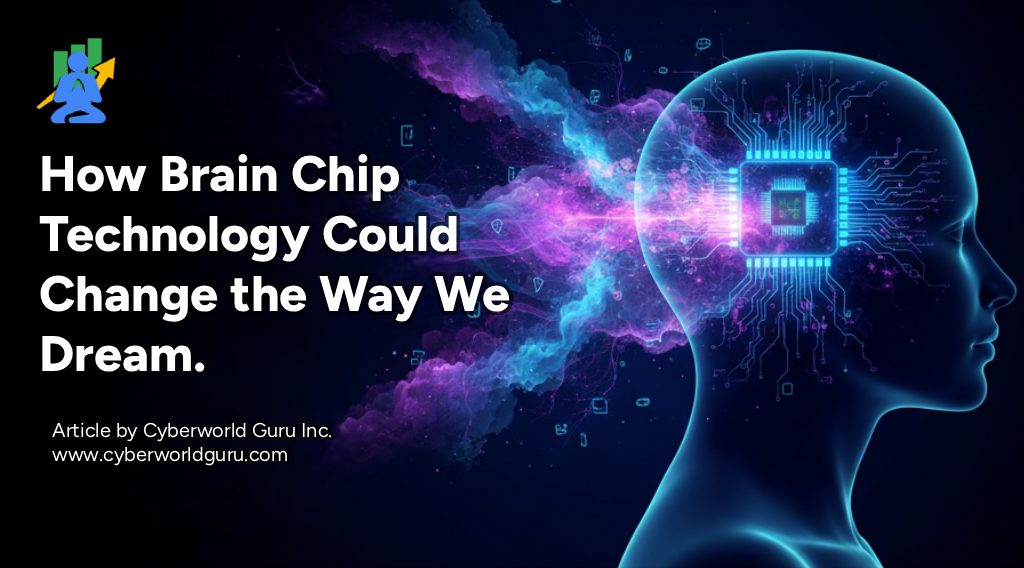From Science Fiction to Reality
Brain chips sound like something out of a sci-fi movie, but technology is moving fast. Scientists are already experimenting with neural interfaces that connect the brain to computers. One of the most fascinating (and controversial) possibilities? Influencing and recording our dreams.
At Cyberworld Guru Inc., we explore these future technologies to help businesses prepare for what’s coming next.
2. How Brain Chips Work
Brain-computer interfaces (BCIs) use sensors to detect brain signals and translate them into digital commands. In the future, these chips could:
Stimulate specific areas of the brain to influence dreams.
Record dream activity for playback and analysis.
Enable “lucid dreaming” on demand.
This could turn dreams into a new form of entertainment or therapy.
3. Potential Benefits
Mental health treatment: Dreams could be shaped to reduce anxiety or trauma.
Creativity: Artists and innovators could use dreams for inspiration.
Education: Learning in dreams could accelerate skill acquisition.
Entertainment: Imagine “dream experiences” as a new media industry.
4. The Concerns and Risks
Privacy: Do we want companies accessing our dreams?
Addiction: Escaping into dream worlds instead of reality.
Ethical dilemmas: Who controls the content of your dreams?
Health risks: Long-term impacts of brain chips are still unknown.
5. Conclusion: Dreaming in the Digital Age
By 2050, dreams may not be entirely private or random anymore—they may be programmable.
At Cyberworld Guru Inc., we track these advancements because they don’t just impact individuals; they reshape industries. Businesses that stay ahead of brain-chip technology will be ready for the most radical shifts in human experience.

